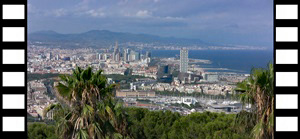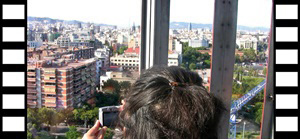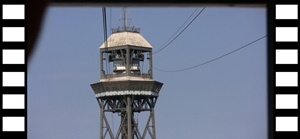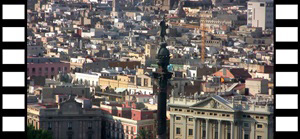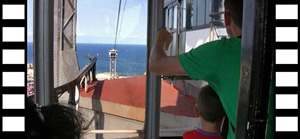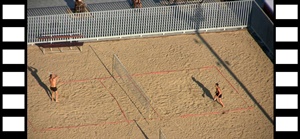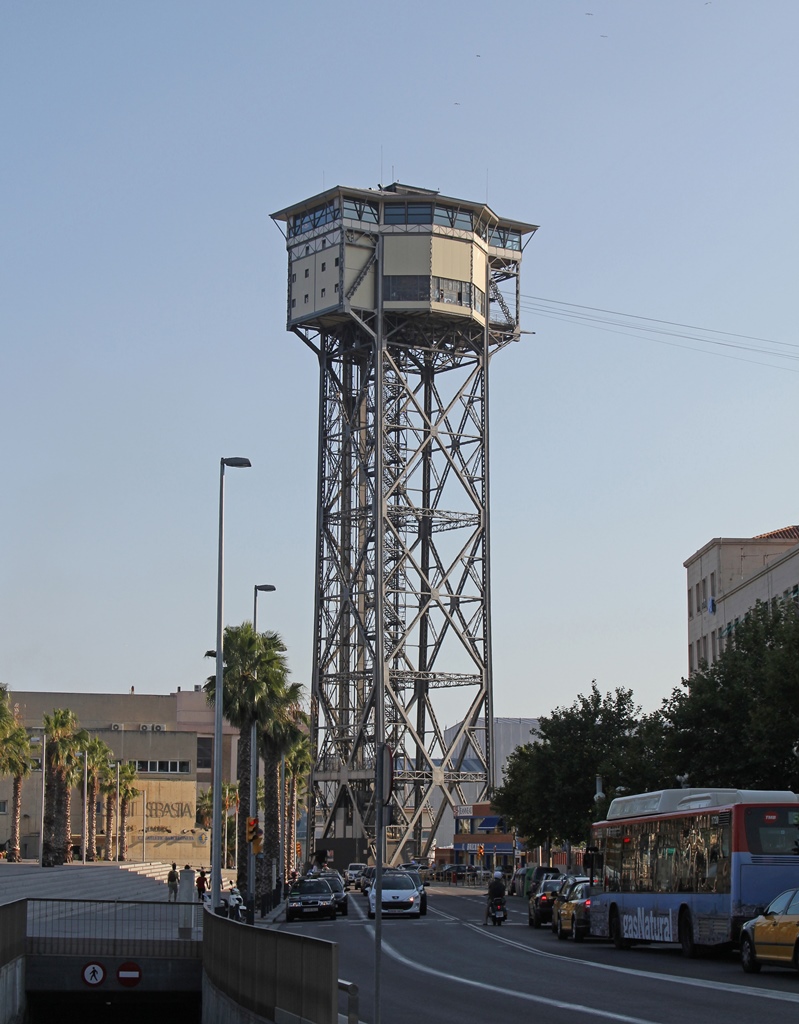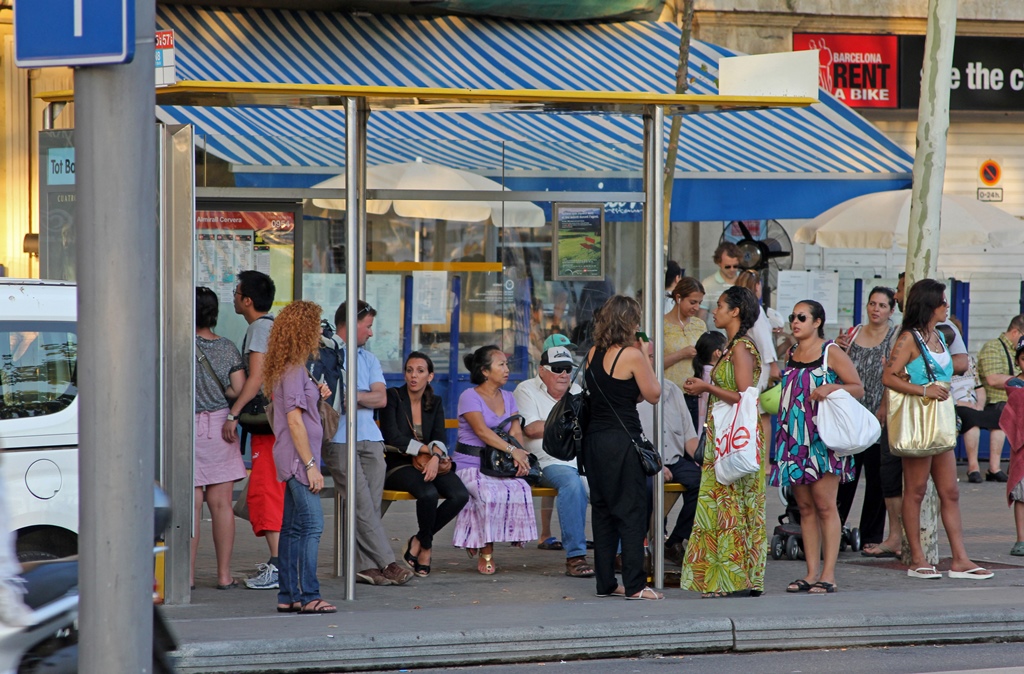The portion of Barcelona's harbor to the north of Montjuïc, unlike the shipping-intensive portion
to the south, is largely devoted to the personal enjoyment of tourists and private citizens. It's
called Port Vell ("old harbor" in Catalan), and has a number of small peninsulas jutting out into
it. One of these peninsulas has a shopping mall, an IMAX theater and Europe's largest aquarium on
it. Another is the home of the Barcelona World Trade Center. Much of the harbor itself is a
parking lot for people's personal watercraft. The northern shore of Port Vell is a neighborhood
known as La Barceloneta which features numerous restaurants and nightclubs. The
ocean-facing side of the Barceloneta features a large, sandy beach which is considered one of the
best in Europe.
But the northern harbor of Barcelona was once a very different place, as recently as the 1980's.
During that decade, none of the above-mentioned structures existed. Much of the waterfront was
covered with run-down warehouses. The Barceloneta was home to a community of fishermen (they
still have a diminished presence), and the beach was poorly maintained. But when Barcelona was
awarded the 1992 Olympic Games, powerful forces were set into motion which continued through and
beyond the games to make the Barcelona waterfront a popular tourist destination.
One often unjustly overlooked attraction of Barcelona's waterfront is the Port Vell Aerial
Tramway, a ride that carries bucket-shaped, cable-suspended gondolas all the way from Montjuïc
to the Barceloneta (or vice-versa, depending). The Montjuïc station is located about 200 feet up
the hill, and the Barceloneta station is at the top of a 280-foot tower called the Torre Sant
Sebastià. In the middle the tramway passes through a 350-foot tower called the Torre Jaume
I, which is situated next to the World Trade Center. Since the tramway travels "as the crow
flies" (almost literally), the length of the entire route is only about eight-tenths of a mile.
But the view is amazing.
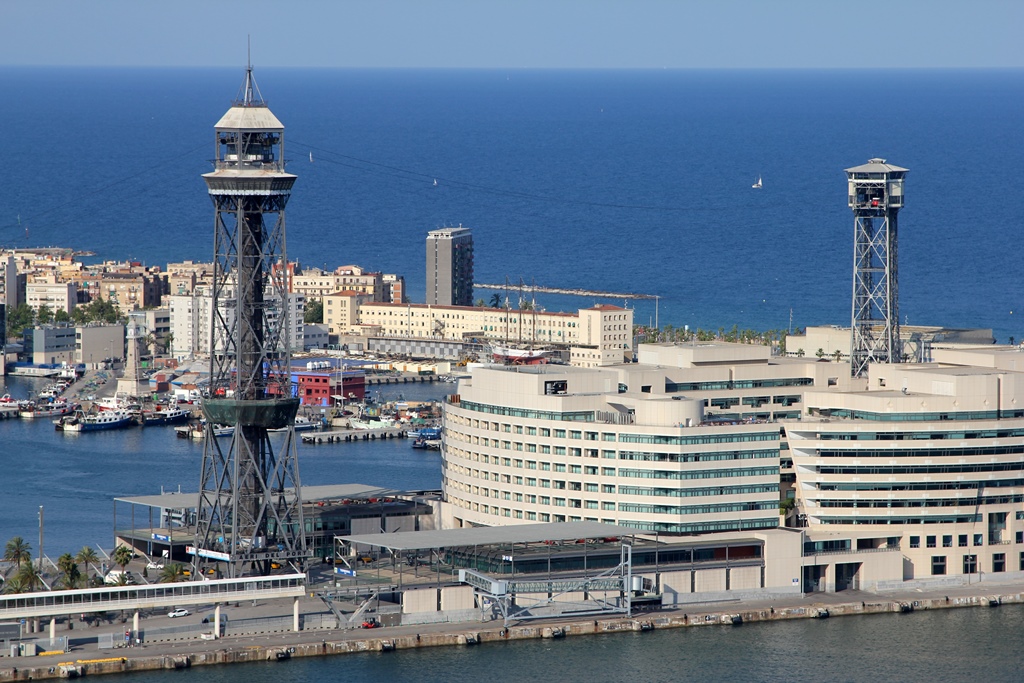
Jaume I and Sant Sebastià Towers with World Trade Center
The tramway was plagued by problems from the beginning. It was first built for the 1929 Barcelona
International Exposition, but due to some overly rosy estimates as to degree of difficulty, it
wasn't completed until 1931. It saw poor business because of the worldwide Depression in progress
at the time, and closed during the Spanish Civil War, during which the Torre Jaume I saw duty as
a lookout station and machine gun post. The tramway eventually reopened in 1963 and saw some good
years, but after some years of neglect it was closed again due to technical problems and
inadequate ridership. In 1996 it was decided to reopen it as part of a project to include the
construction of the World Trade Center, and it finally reopened in 2000, using two of the
original 1931-vintage gondolas.
Returning to our narrative: As we walked down Montjuïc from the castle, we were thinking in terms
of returning to La Rambla via the funicular and Metro, as we'd come. We paused at the Montjuïc
station of the tramway, gazing out over the harbor.

View from Sagrada Família to Coast
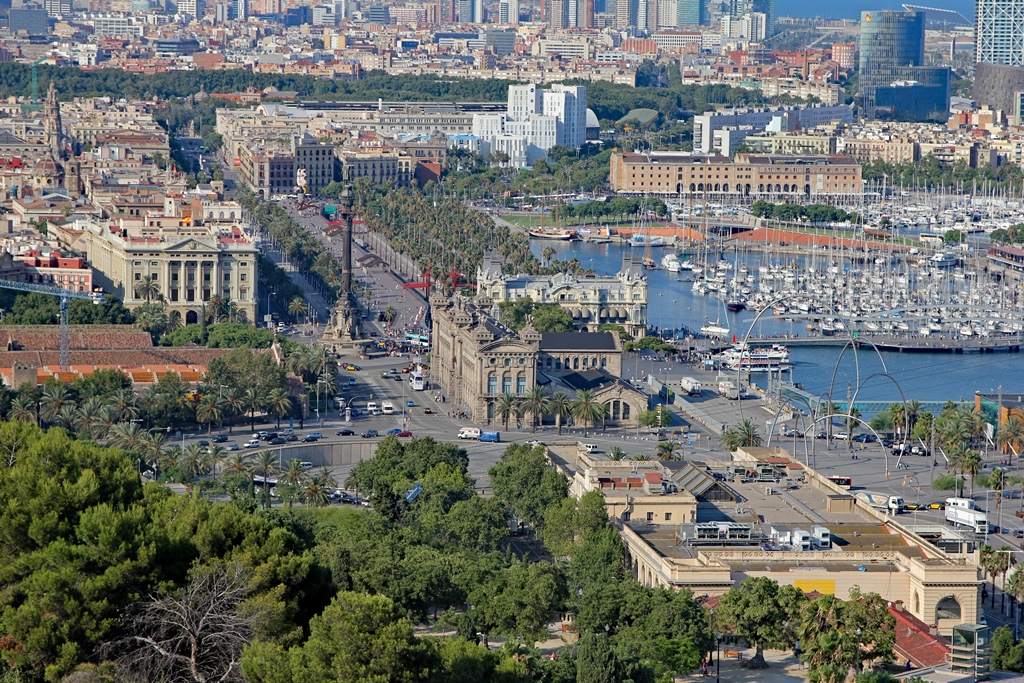
Waterfront
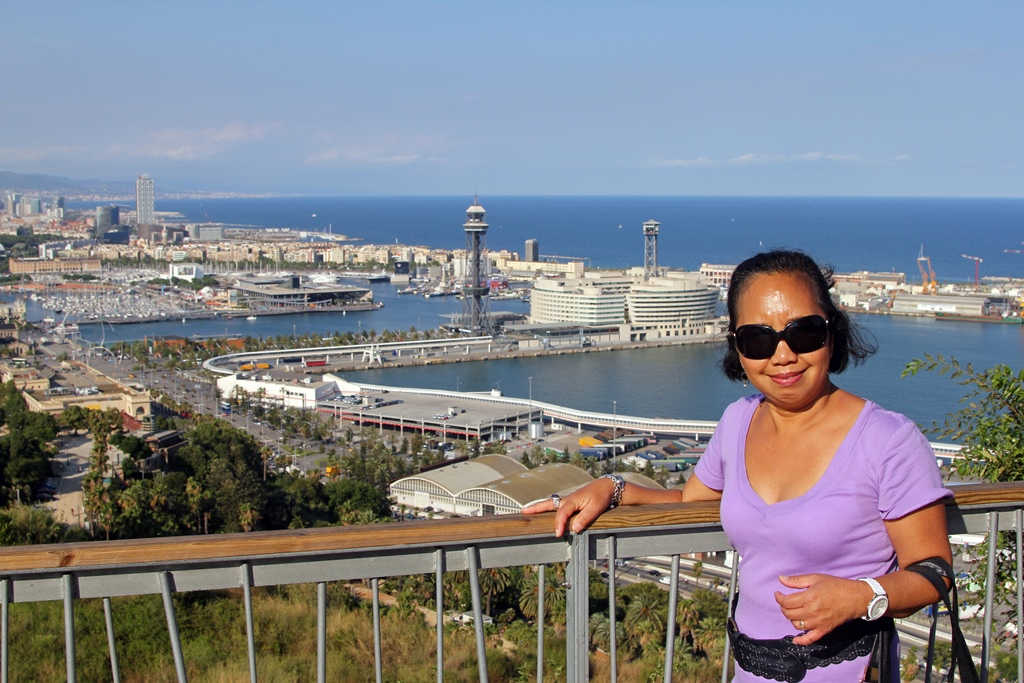
Nella and Harbor
On looking at the tramway itself, we decided it looked kind of cool (dangling hundreds of
feet above the harbor in a Depression-era gondola - what could go wrong?), and it was
approaching dinnertime, and there were supposed to be restaurants in the Barceloneta. Anyway,
the pieces fit together for us, so we walked over to the ticket booth and purchased tickets
for the last trip of the day. We walked down the steps to the boarding platform and entered
the gondola (there was a sign saying it could fit 20 people; this seemed highly optimistic),
and we were soon airborne and moving at a steady 10 feet per second.

The Ride Begins
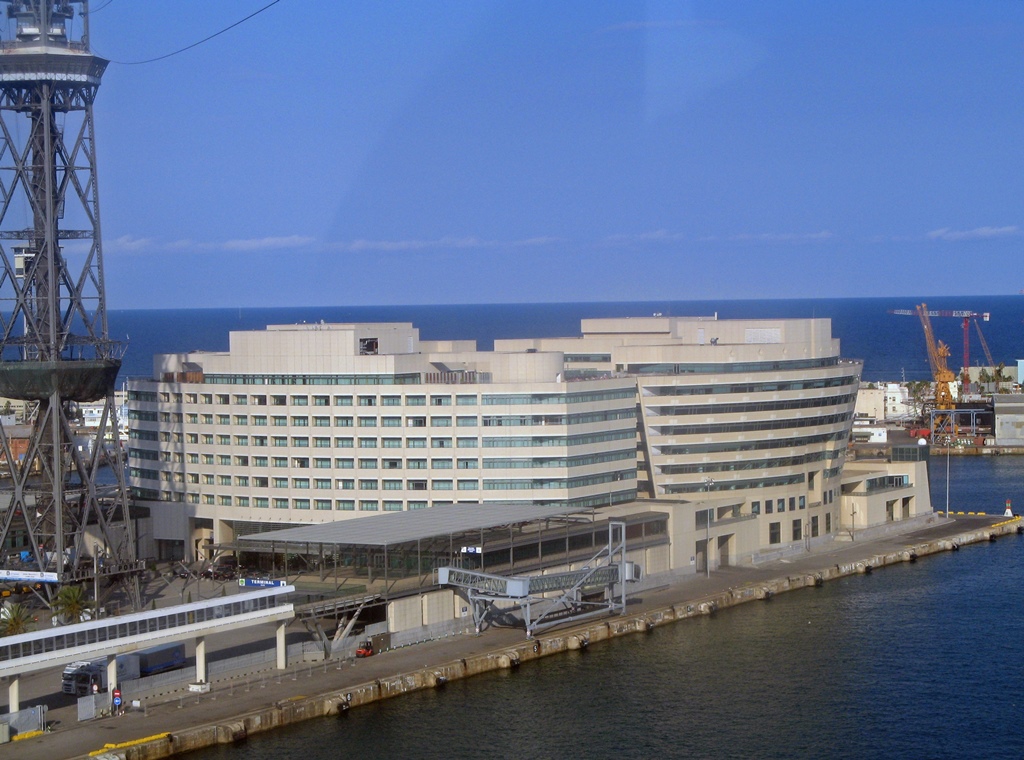
Torre Jaume I and World Trade Center
As it turned out, our gondola only had a few other people in it, so we were pretty free to
walk around and take pictures in different directions. Which we did. There was much to see,
in the harbor itself and on the mainland. At one point we could see up the tree-covered La
Rambla, easily identifiable by the large Columbus monument at the point where La Rambla hits
the harbor.

Cruise Ship, Tower and Marina
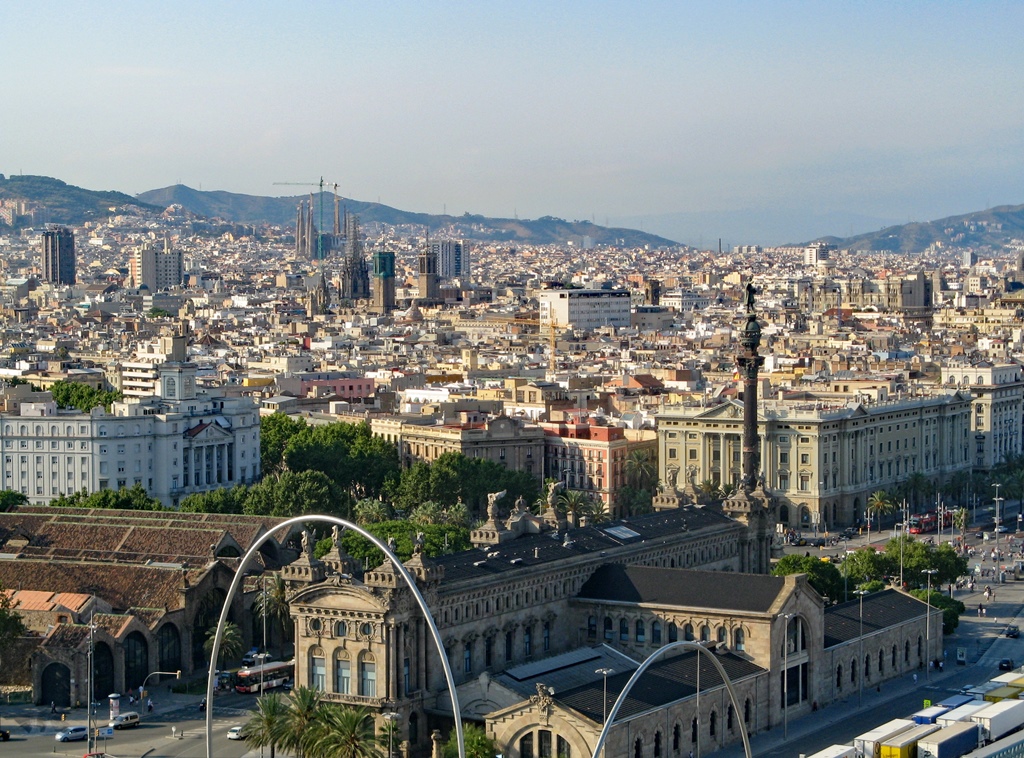
Customs House and Columbus Monument

Customs House, Columbus Monument and Sagrada Família
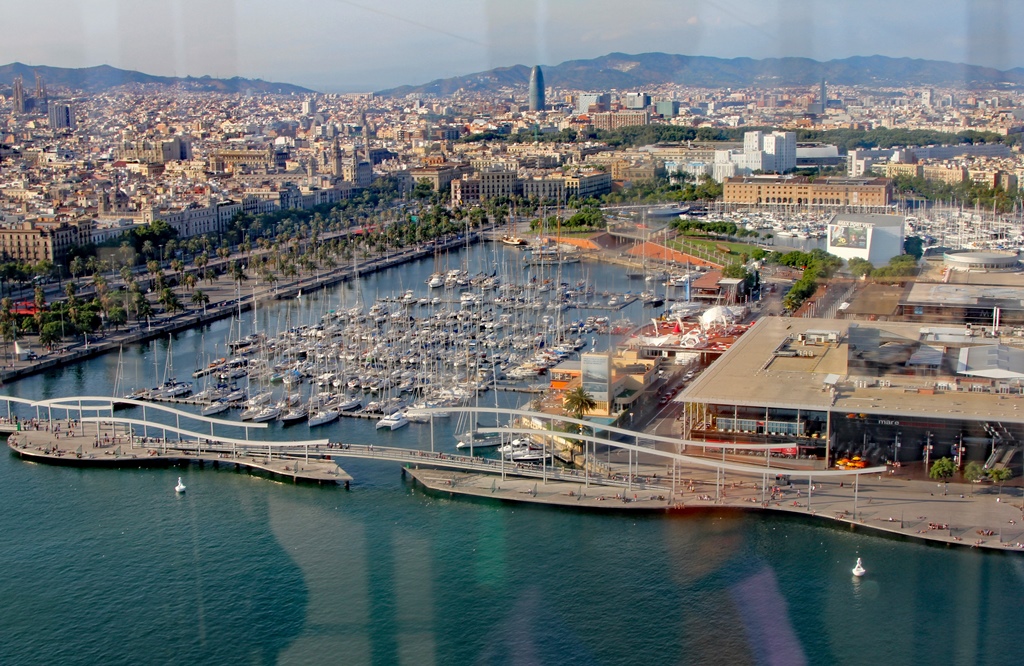
Marina and Maremagnum Mall
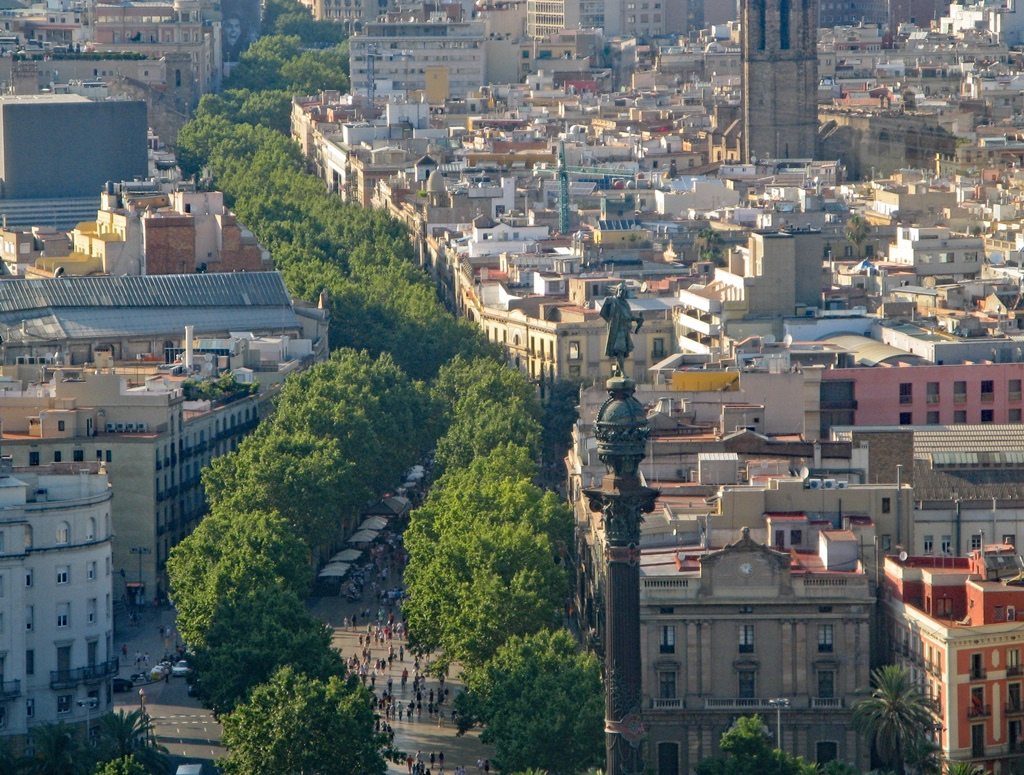
Columbus Monument and La Rambla

Arrival at Torre Jaume I
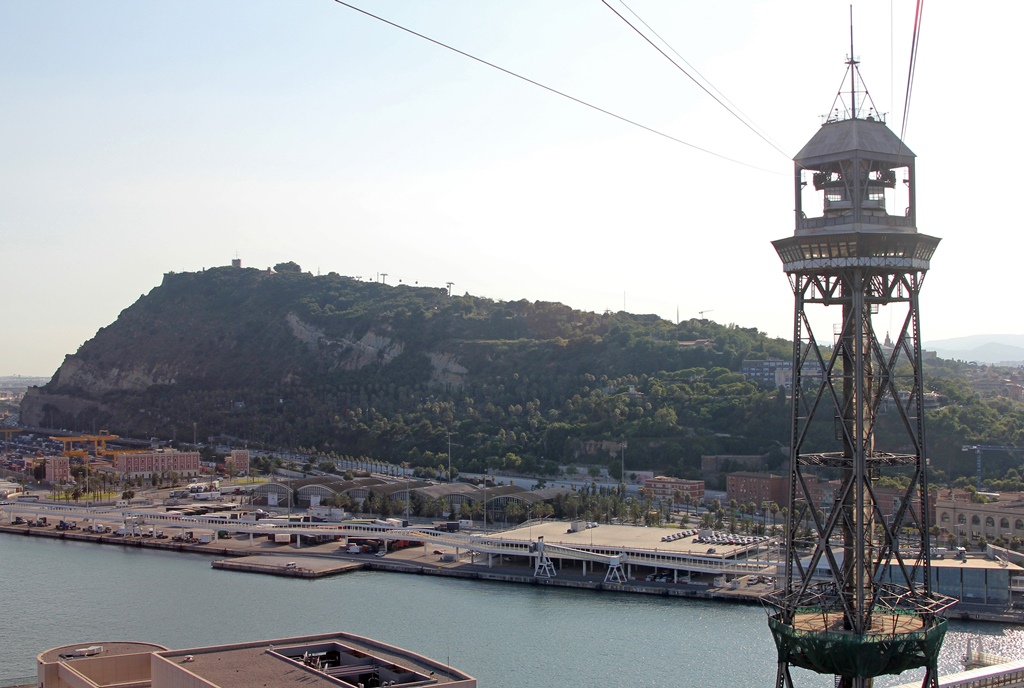
Montjuïc and Torre Jaume I
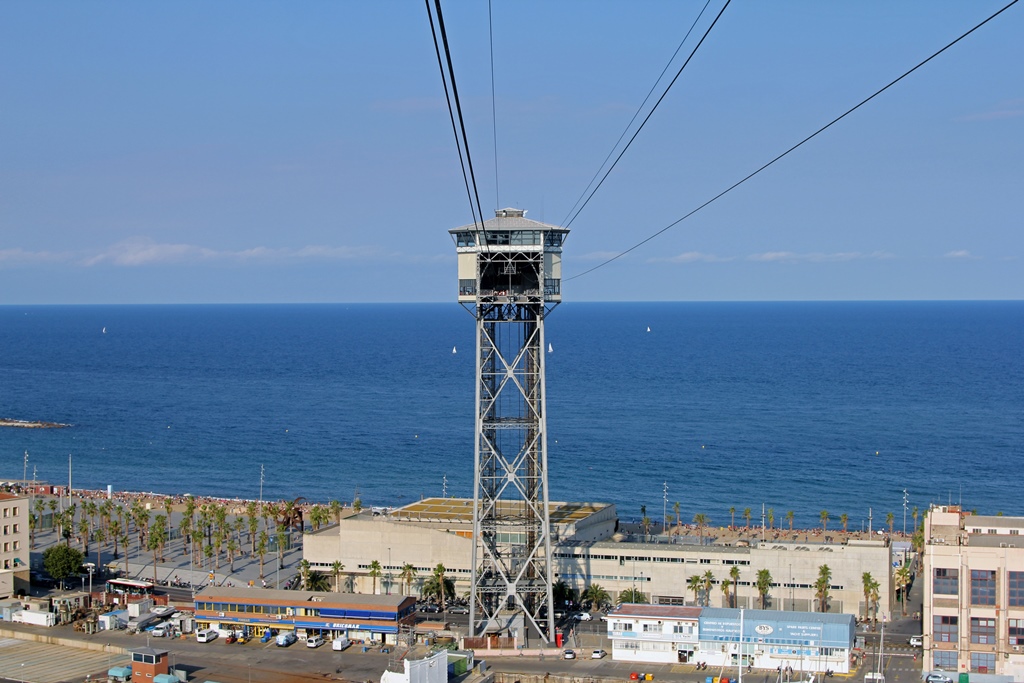
Torre Sant Sebastià
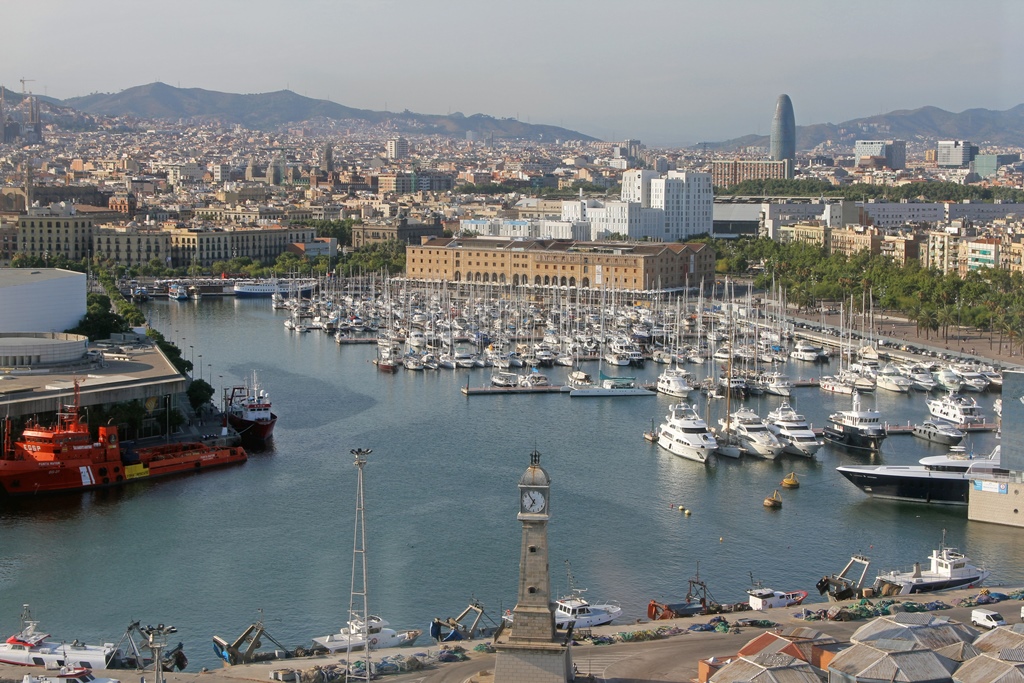
Port Vell
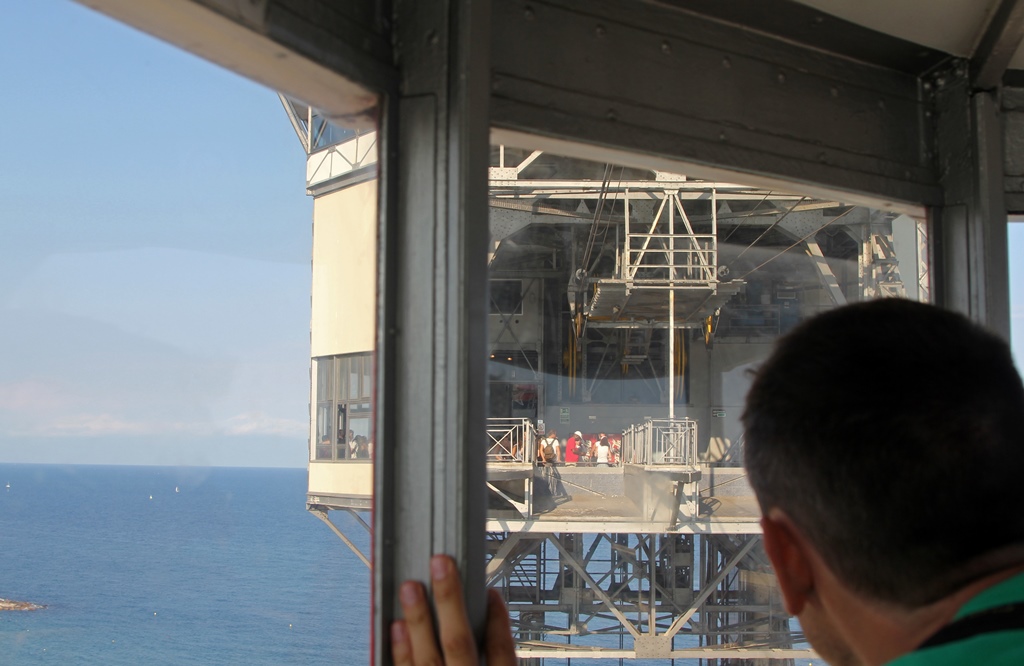
Approaching Torre Sant Sebastià
Eventually we reached the Torre Sant Sebastià, where we got out of the gondola and had
a nice view of the Barceloneta and its beach.
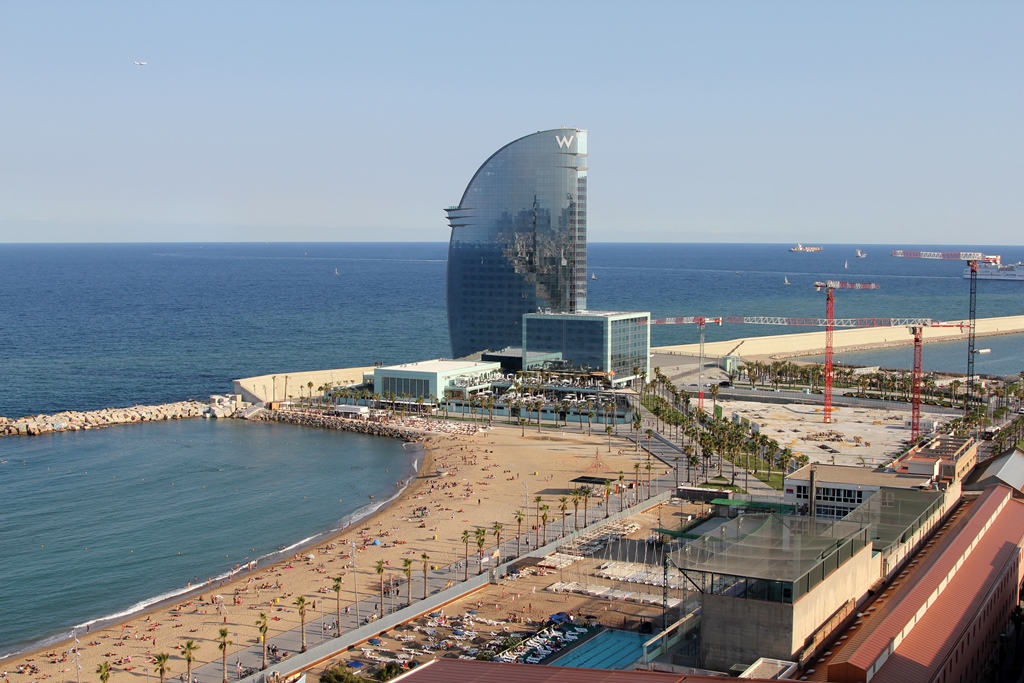
W Hotel and Beach
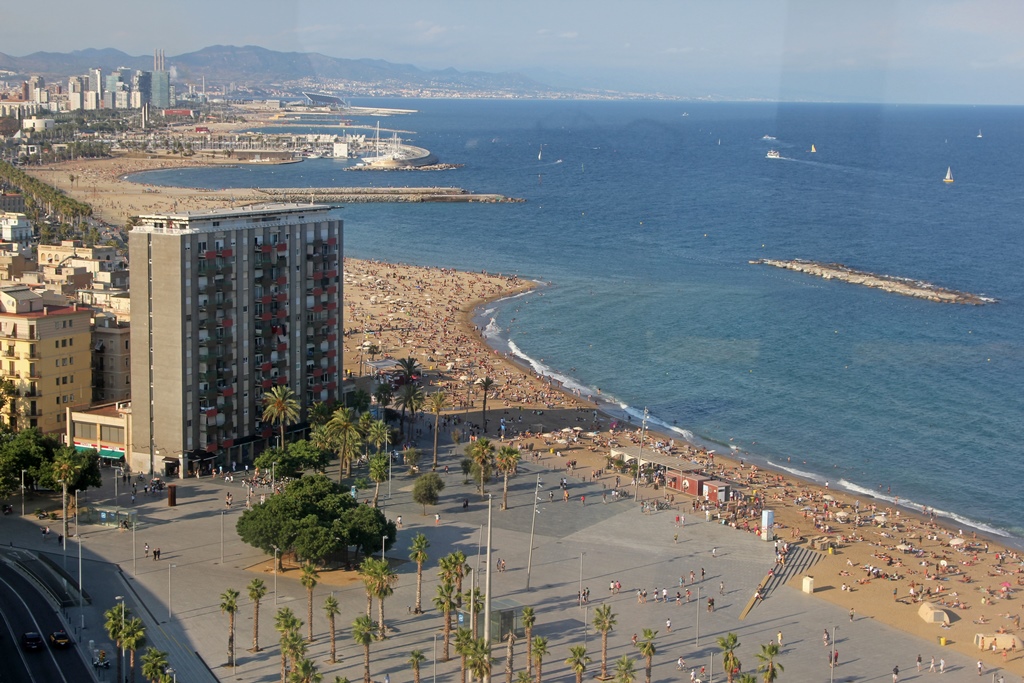
Beach

Paddleball Players, Swimmers and Harbor
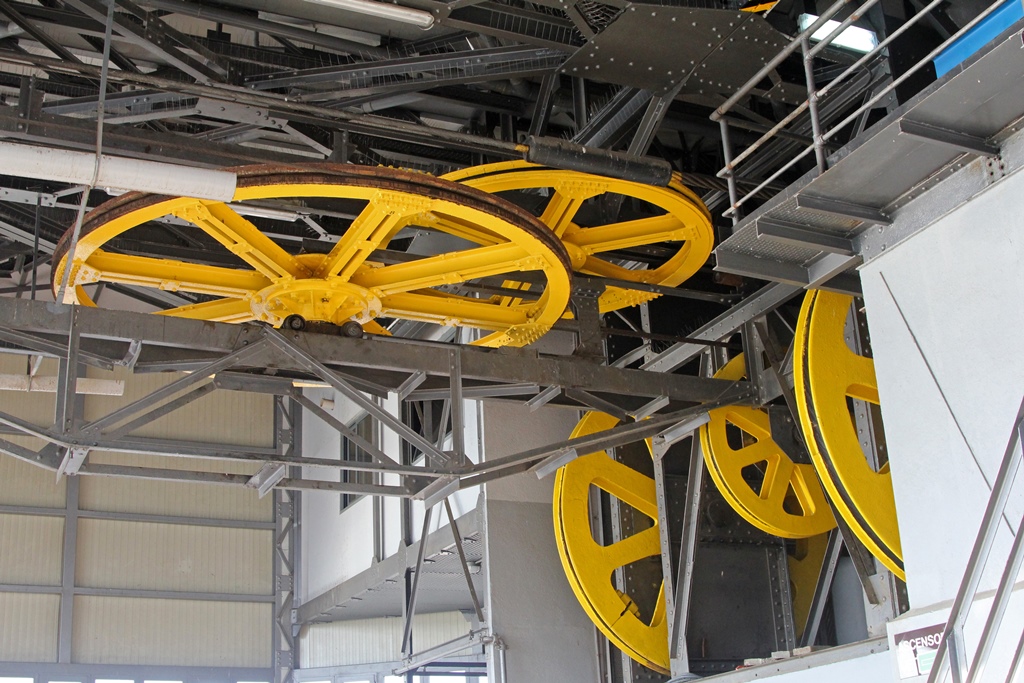
Cable Mechanism, Torre Sant Sebastià
We took the elevator down to ground level and headed toward the restaurants.
Torre Sant Sebastià
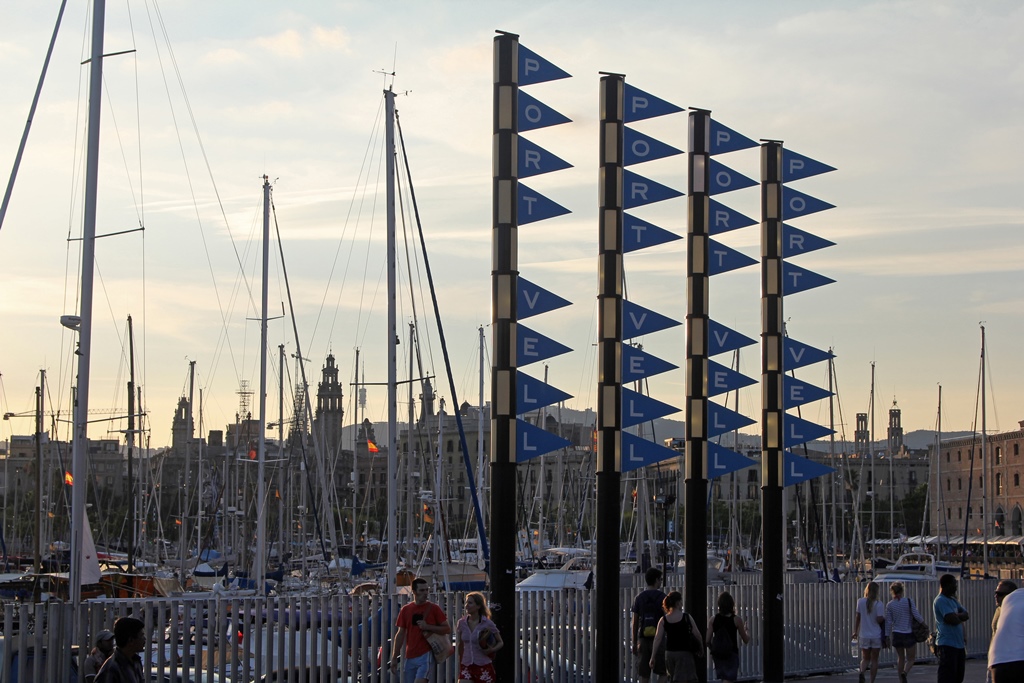
Boats, Port Vell
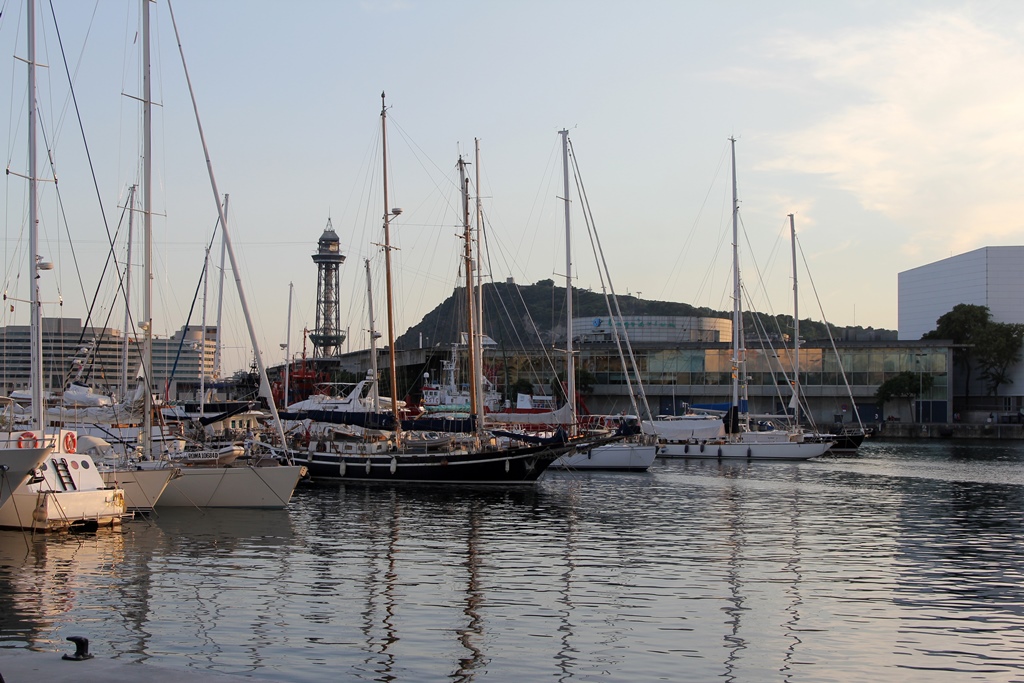
Port Vell, Torre Jaume I and Montjuïc
We found a restaurant and ate dinner, and then discovered that the Metro doesn't go to the
Barceloneta. But we found a bus stop that promised a bus that could take us as far as the
end of La Rambla.
Nella at Bus Stop
We'd really had enough walking for one day by this time, so we waited for the bus, took it to
La Rambla, and returned to our hotel. We had another ambitious adventure planned for the next
day: an excursion out of town to Montserrat.


